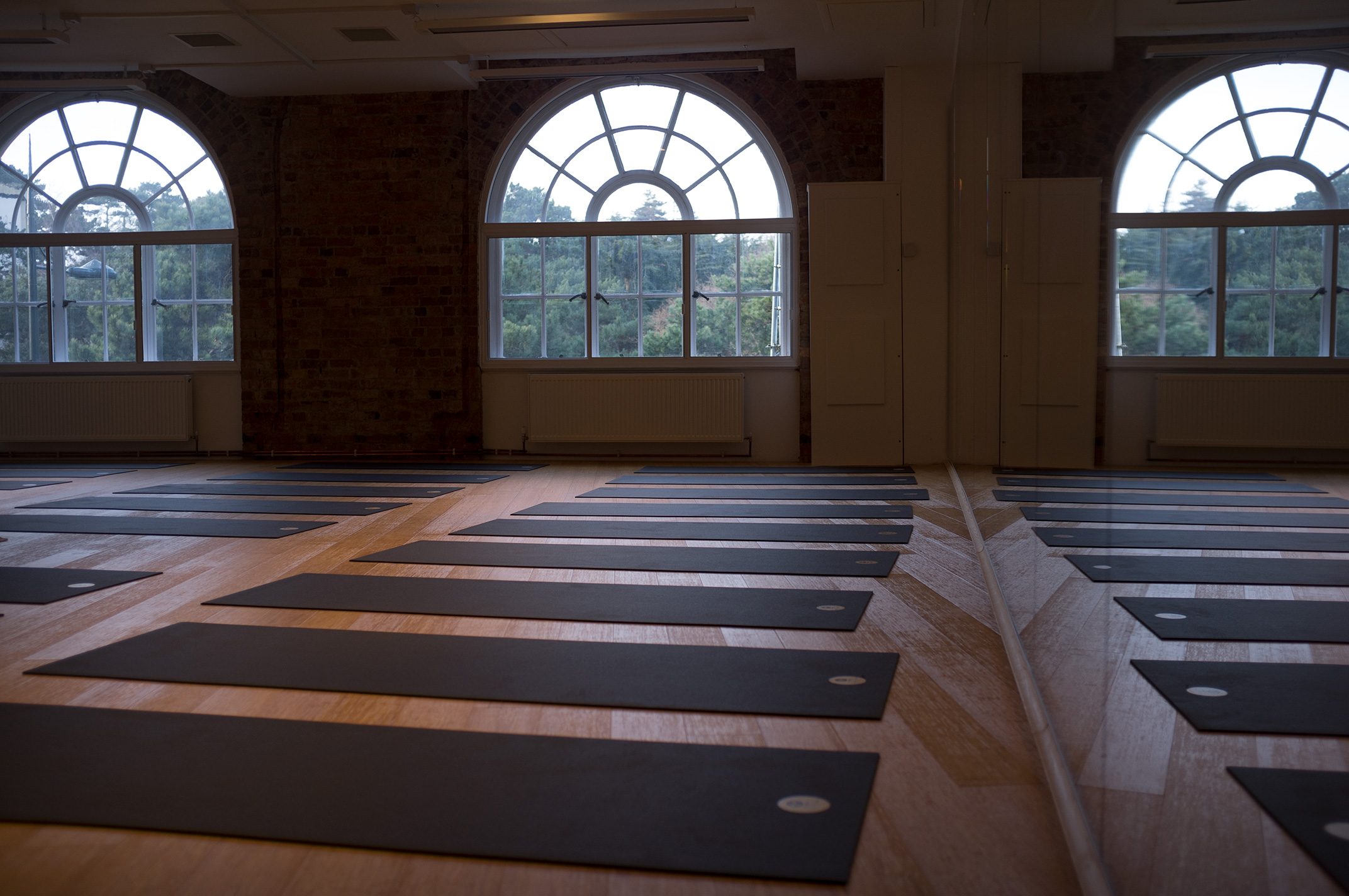“The room of the sadhana should have a small door, without aperture (window), holes or cracks, being neither high nor too low. It should be spotlessly clean, wiped with cow manure and free from animals or insects. Outside, there should be an open platform with a thatched roof, a well and a surrounding wall (fence).” – 1.13 Hatha Yoga Pradipika
The space where you practise Yoga today may be quite different from the very detailed instructions given in the 15th century’s Hatha Yoga Pradipika. Obviously there are some things you would still expect, like a space free from animals or insects, a pure and unpolluted environment, and a lack of obvious distractions. But much like the Yoga practice itself, certain adaptations have to be made to suit present circumstances and requirements.
You might now be wondering what circumstances exactly have changed and why has Yoga had to change so much from the ancient traditions that were practised hundreds – and by some accounts, thousands – of years ago? Well, these days, Yoga practitioners are likely to have a packed schedule of work and life activities and so even the most dedicated Yogis can usually manage only an hour or so a day of practice, whereas the ‘sadhana’ that the HYP describes is more of a full time vocation. The detailed descriptions of the classical Yoga texts are directed towards spiritual unfoldment through a highly disciplined and austere path, so they are useful for reference rather than rule. Nowadays we tend to focus more on the endless remedial benefits of Yoga; from increased strength and flexibility, more energy, improved respiration and enhanced cardiovascular and circulatory health, to improved sports performance, injury prevention, and lower stress levels! What’s more, rather than sticking to a rigid routine, modern Yoga encourages you to progress at your own pace, adding to your asana arsenal as time and your body allows.
As One for All is completely dedicated to protecting your knees, sacroiliac joints and lower back when teaching you asanas we rely on aligning the pose to your body rather than the other way around. Hatha Yoga uses the physical body as a means to traverse the spiritual path – your body is your temple, as they say – the idea being to purify the body and progress toward purity of the mind. However, if the mind is fixed on aligning the body to fit a specific shape dictated by an image or a set script of instructions then there is no state of pureness; just force and strain. Of course there is the possibility that your feet, ankles, knees, hips and pelvis are all truly in a line as 20th century Yoga alignment suggests, but we as Yoga teachers are yet to meet anyone like this!
Good-to-Know: Sanskrit
Ever felt like you needed a translator when you walked into a Yoga studio? Well you’re not alone! Sanskrit is an expansive language that the Yogic texts were originally written in. But there are very few Sanskrit words used frequently now. Even in its origin of southern India, the dialect has mostly died away. It may sound like gobbledygook but keeping it up is a way of honouring what has gone before us in the way of Yoga teaching and practice. As with everything Yoga, there are the ancient prescriptions as well as the modern interpretations of meanings.
These five words, common to every Yoga class, are a good place to start to demystify the language of Sanskrit:
- Asana (AH-sah-nah)… literal translation being “seat”; nowadays used as “pose”;
- Namaste (nah-mah-stay)… literal translation being “the divine light within me salutes the divine light within you”; nowadays used as “greetings”;
- Om (ah-uh-mm)… literal translation being described as “the sound of the universe”; nowadays used as a way of uniting and grounding the energy within the room;
- Shanti (sharn-tee)… literal translation being “peace”; nowadays often repeated three times to invoke peace in actions, speech and thoughts;
- Yoga (yo-ger)… literal translation “yoke”; nowadays described as “union of body, mind and spirit”.
Good-to-Know: Props
When you first arrive at the One for All Yoga studio, you will see our well-stocked wall of props. Looking at such a selection for a beginner can be quite daunting. If the teacher has set a mat up at the front of the room then they will likely have also placed out any props they are planning to incorporate during the class, so the best thing to do is ‘copy-paste’ exactly what the teacher’s got. Props are mostly used in the Yin and Restorative classes and are essential to these practices for balancing flexibility with support so that you do not overstress your body and therefore have a more peaceful practice. Using props in a Flow class can work miracles for helping with alignment, as well as promoting relaxation, assisting with balancing poses, and in some cases deepening postures.
Try incorporating these props into your practice and see what effect they have:
Block: sit on a block rather than directly on the mat and notice how your weight shifts more towards the front of your sit bones rather than the back.
Strap: use a strap around the top of the thighs to keep the legs together when you take a supported shoulderstand.
Blanket: if you have any pain in the knees or bones of the hip while doing postures on the floor, simply place a blanket on your mat for comfort.
Bolster: slide a bolster underneath your knees to allow your lower back to release a little more during Savasana.
It’s good to know a little bit about Yoga, Sanskrit and props but remember the only essential for any Yoga practice is to show up and be present!
